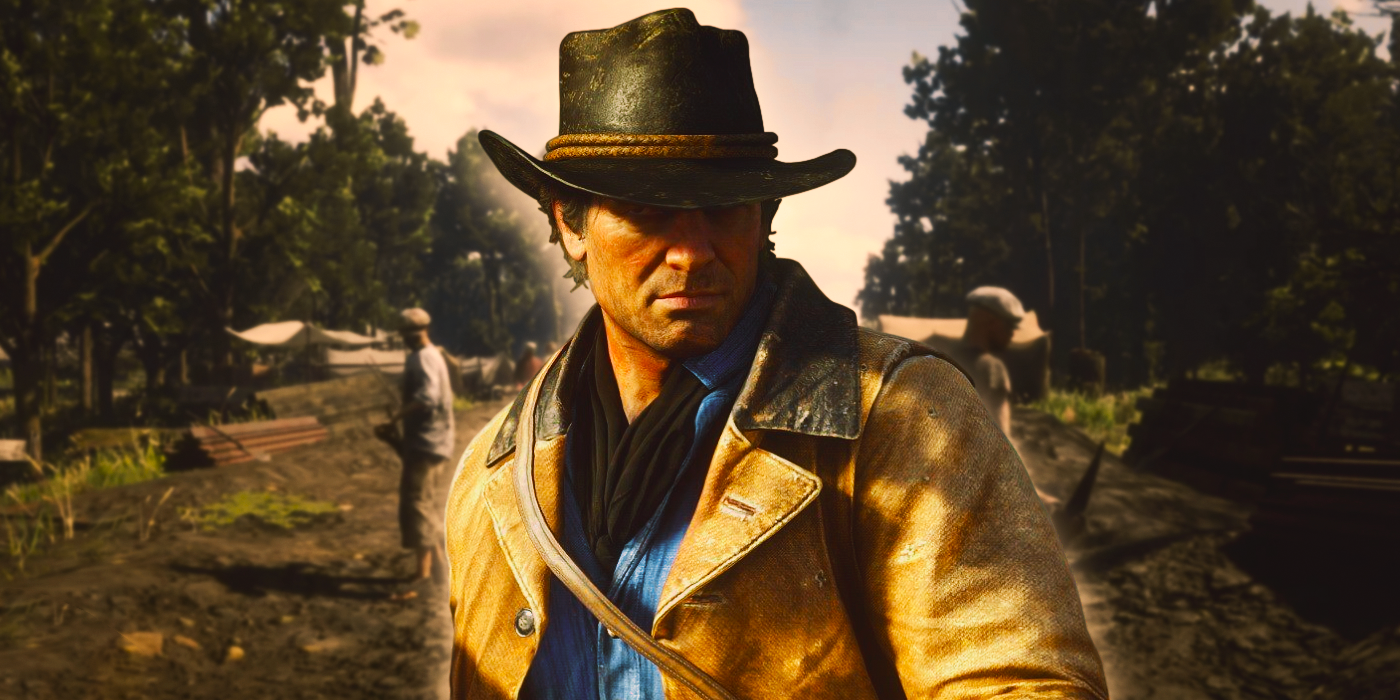History is everywhere in Red Dead Redemption 2, but one tragic little detail really hammers it home. Set mostly in 1899, as the Wild West era is beginning to come to an end, RDR2 tackles the truth and the myth of the American cowboy. It allows players to roam around a well-researched, detailed recreation of the American west, taking in lessons about the period and its influences on the modern day.
There’s plenty of historical accuracy in Red Dead Redemption 2: players can weigh in on women’s suffrage, participate in early paleontology, or find and destroy the KKK. But those are all big-picture plot points; there’s plenty of historicity to be found in the tiniest of details, too. And one such tiny detail points to a wealth of obscure, uncomfortable historical knowledge long buried.
Located in a quiet field along the railway tracks just north of Saint Denis is a small, hand-carved wooden grave marker memorializing 12 nameless workers, who appear to have passed away between May and July 1878. Based on its positioning and the lack of names provided for the deceased, this minor detail is probably intended to reference the countless Chinese immigrants who died while working on America’s railroads. These laborers’ names and numbers were rarely documented; some railroad foremen’s time sheets list all Chinese workers as if they were a single individual. As a result, most of these laborers’ true names and origins remain unknown to this day.
While many Chinese railroad workers were interred in a mass grave in Los Angeles’ Evergreen Cemetery, smaller burial sites like this one are mostly the product of RDR2’s fiction. However, many deceased railroad workers were buried in unmarked graves near the lines they worked on, and it’s not too much of a stretch to assume some of them were referred to by numbers instead of names. This inclusion does have a strong basis in fact.
In the late 19th century, the rail industry rapidly became a major source of profit. It made sense: here was a novel form of transportation, greatly reducing the time it took to travel from one end of the country to the other, carrying people, goods, and ideas from east to west and vice versa. Several large companies vied for control of regional railways. Renowned robber barons like Andrew Carnegie, Leland Stanford, and Cornelius Vanderbilt, whose names adorn streets and buildings in many major US cities, made no small part of their fortunes by building railroads.
2023-12-10 07:41:03
Post from screenrant.com
rnrn
